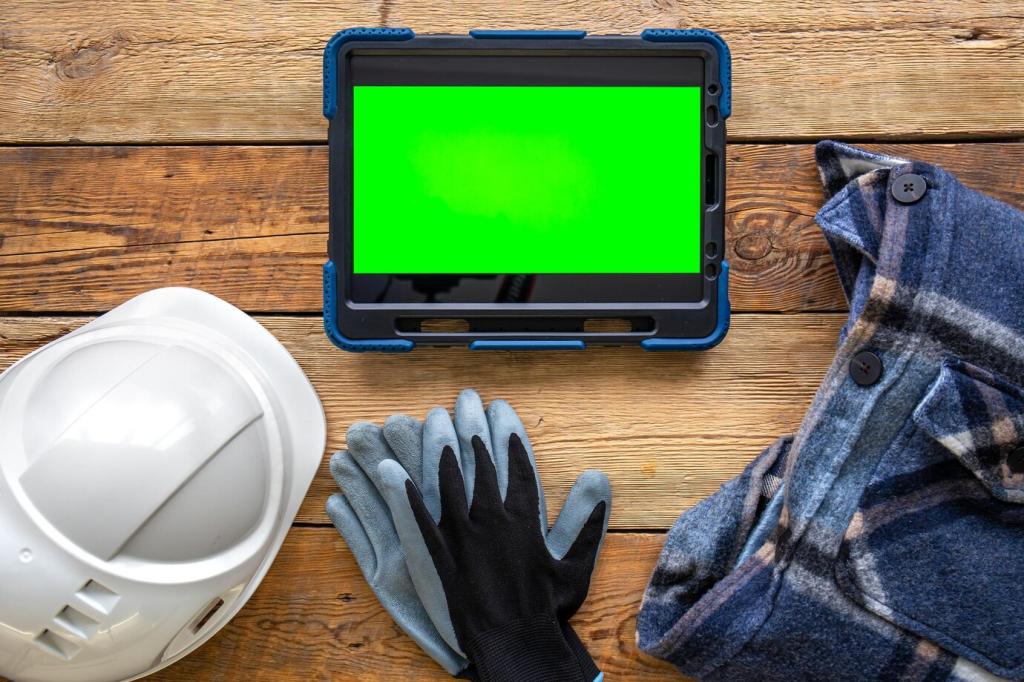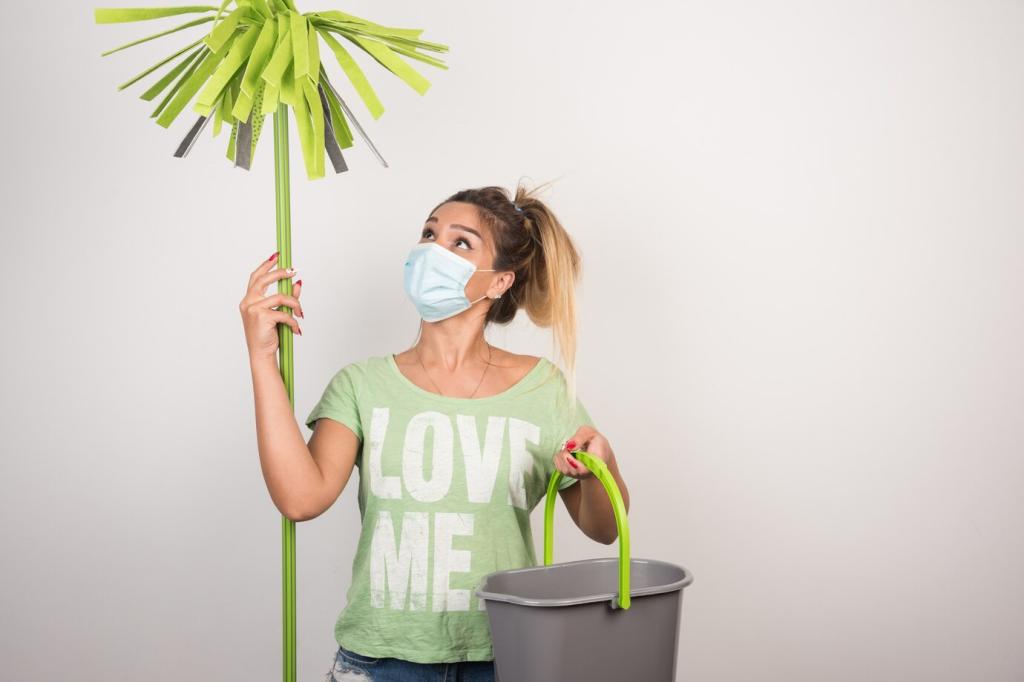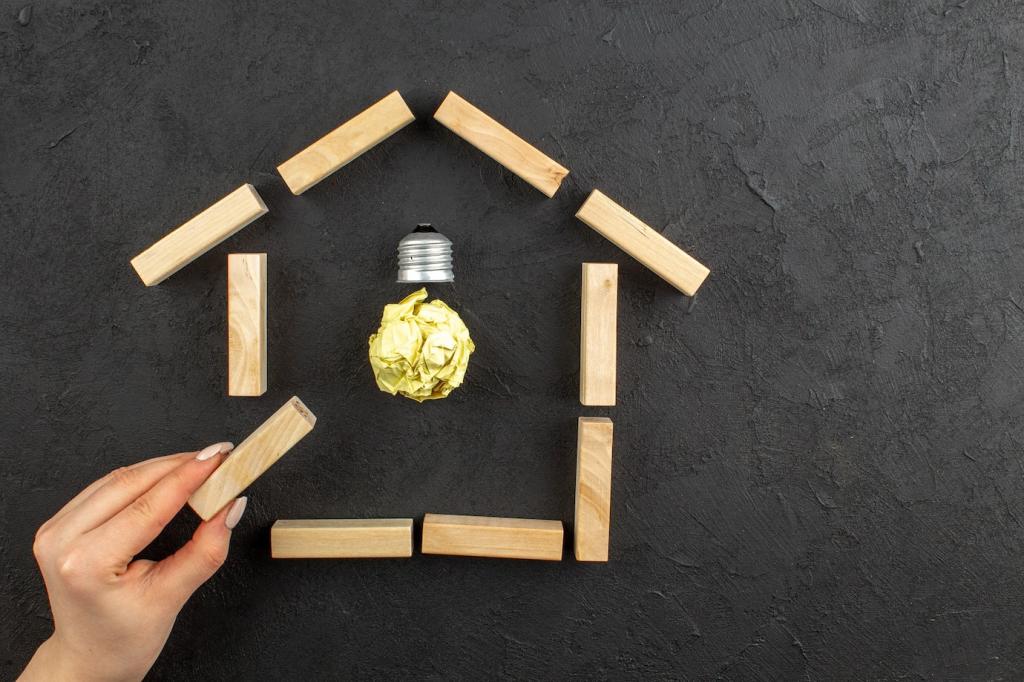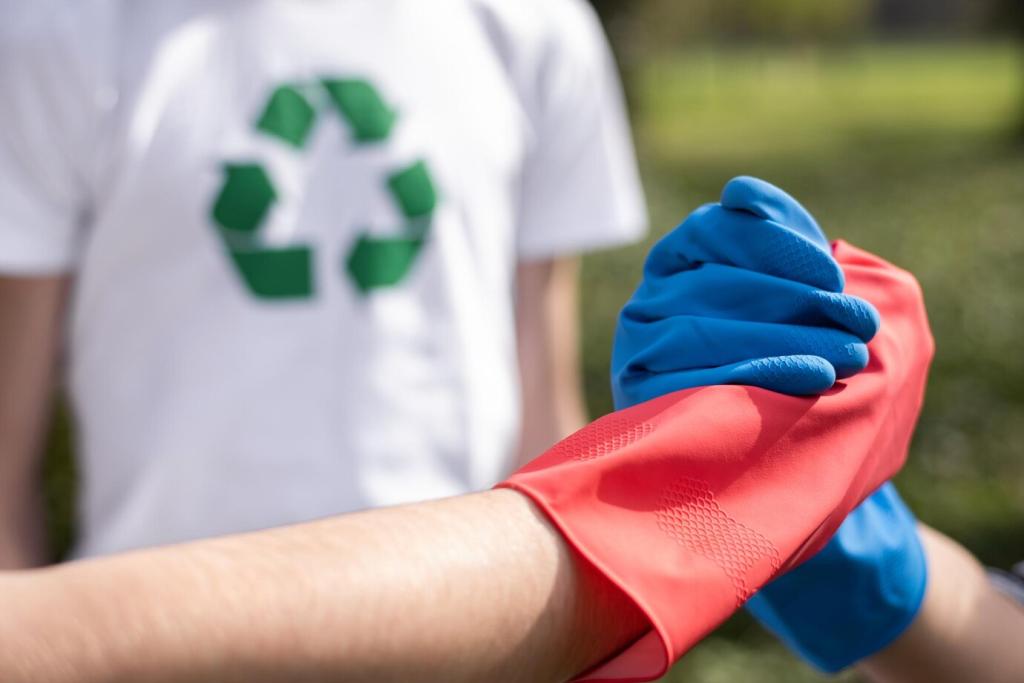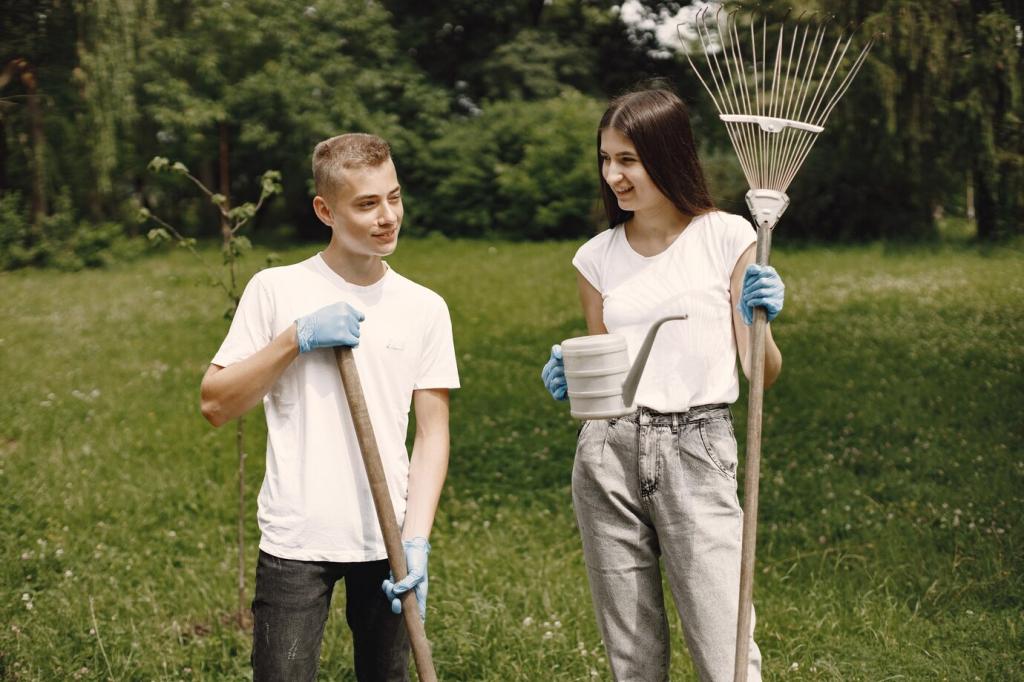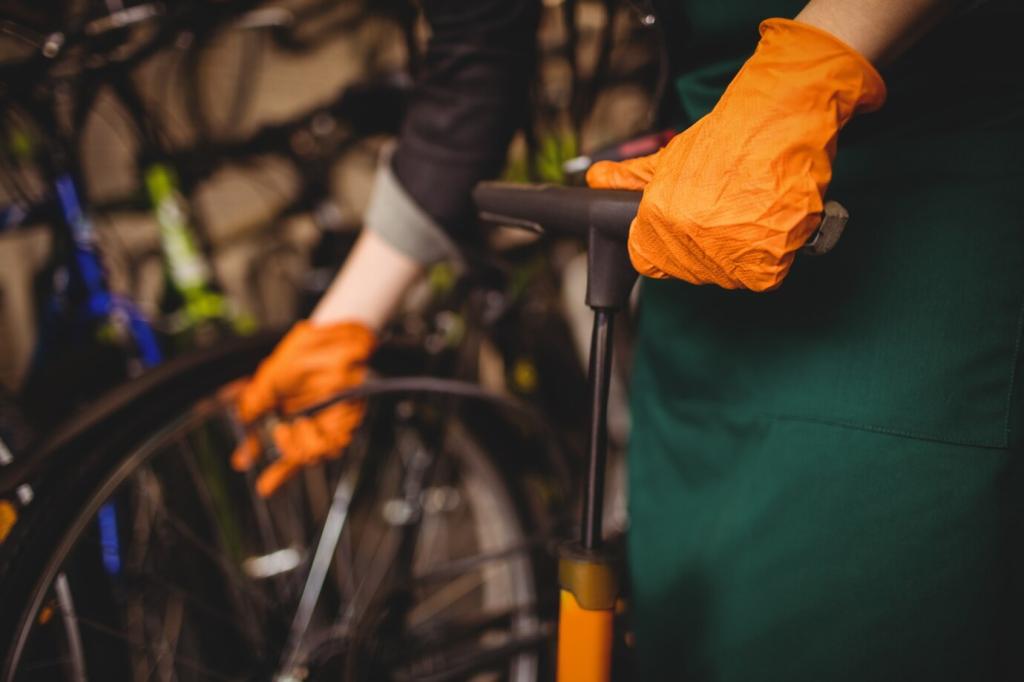Smart Sourcing and Community Resources
Opt for plant-based waxes, water-based finishes, and FSC-certified or reclaimed wood when buying supplies. Prefer concentrated cleaners in refillable containers. Avoid disposable wipes and single-use pads. Quality tools last decades; one good brush beats piles of flimsy ones that shed bristles and clog landfills unnecessarily.
Smart Sourcing and Community Resources
Use community tool libraries for clamps, sanders, or steamers you’ll rarely need. Share rarely used tools with neighbors through simple spreadsheets or group chats. Pooling resources reduces packaging waste, saves money, and fosters helpful connections that make bigger repair projects possible and more enjoyable for everyone involved.

